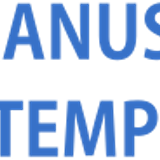A Case Study of Primary and Secondary Porosity Effect for Permeability Value in Carbonate Reservoir using Differential Effective Medium and Adaptive Neuro-Fuzzy Inference System Method
Abstract
Pore system in a carbonate reservoir is very complex compared to the pore system in clastic rocks. According to measurements of the velocity propagation of sonic waves in rocks, there are three types of carbonate pore classifi cations: Interpartikel, Vugs and Crack. Due to the complexity of various pore types, errors in reservoir calculation or interpretation might occur. It was making the characterization of the carbonate reservoir more challenging. Differential Effective Medium (DEM) is an elastic modulus modeling method that considers the heterogeneity of pores in the carbonate reservoir. This method adds pore-type inclusions gradually into the host material to the desired proportion of the material. In this research, elastic modulus modeling will be carried out by taking into account the pore complexity of the carbonate reservoir. ANFIS algorithm will also be used in this study to predict the permeability value of the reservoir. Data from well logging measurements will be used as the input, and core data from laboratory will be used as train data to validate prediction results of permeability values in the well depths domain. So, permeability value and pore type variations in the well depth domain will be obtained.
Keywords
Full Text:
PDFReferences
Al-Jarrah, O. & Halawani, A., 2001. Recognition of
Gestures in Arabic Sign Language Using Neuro-Fuzzy
Systems. Artifi cial Intelligence, 133(1-2), pp. 117-138.
Candikia, Y. N., Rosid, M. S. & Haidar, M. W., 2017.
Comparative Study Between Kuster Toksoz and
Differential Effective Medium Method for Determining
Pore Type in Carbonate Reservoir, AIP Conference.
Chen, M.-S. & Wang, S.-W., 1999. Fuzzy Clustering
Analysis for Optimizing Fuzzy Membership Function.
Fuzzy Sets and Systems, 103(2), pp. 239-254.
Chiu, S. L., 1994. Fuzzy Model Identifi cation Based On
Cluster Estimation. Journal of Intelligent and Fuzzy
Systems, 2(3), pp. 267-278.
Huang, Y., Gedeon, T. D. & Wong, P. M., 2001. An
Integrated Neural-Fuzzy-Genetic Algorithm Using
Hyper Surface Membership Function to Predict
Permeability in Petroleum Reservoir. Engineering
Applications of Artificial Intelligence, 14(1), pp.
-21.
Kadkhodaie-Ilkhchi, A., Rahimpour-Bonab, H.
& Rezaee, M., 2009. A committee machine with
intelligent systems for estimation of total organic
carbon content from petrophysical data: An example
from Kangan and Dalan reservoirs in South Pars Gas
Field. Computers & Geosciences, 35(3), pp. 459-474.
Khaxar, Z. O., Bagheri, M. & Karkuti, E., 2007. Fuzzy
approach for porosity classifi cation by using well
log data. International Earthquake symposium, pp.
-572.
Kuo, H., Gedeon, T. D. & Wong, P. M., 1999. A Clustering
Assisted Method for Fuzzy Rule Extraction and
Pattern Classifi cation. Perth, WA, Australia, IEEE,
pp. 679-684.
Mavko, G., Mukerji, T. & Dvorkin,, J., 1998. The Rock
Physics Handbook. Cambridge: Cambridge University
Press.
Nikravesh, M., Zadeh, L. A. & Aminzadeh, F., 2003.
Soft Computing and Intelligent Data Analysis in Oil
Exploration. Berkeley, USA: Elsevier.
Takagi, T. & Sugeno, M., 1985. Fuzzy Identifi cation of
Systems and Its Application to Modeling and Control.
IEEE Transactions on Systems, Man, and Cybernetics,
SMC-15(1), pp. 116 - 132.
Xu, S. & Payne, M. A., 2009. Modelling Elastic
Properties in Carbonate Rocks. The Leading Edge
SEG, 28(1), p. 1–128.
Zhao, L., Nasser, M. & Han, D., 2013. Quantitative
Geophysical Pore-Type Characterization and Its
Geological Implication in Carbonate Reservoirs.
Geophysical Prospecting, 61(4), pp. 827 - 841.
DOI: https://doi.org/10.29017/SCOG.45.1.923

This work is licensed under a Creative Commons Attribution-NonCommercial-NoDerivatives 4.0 International License.






